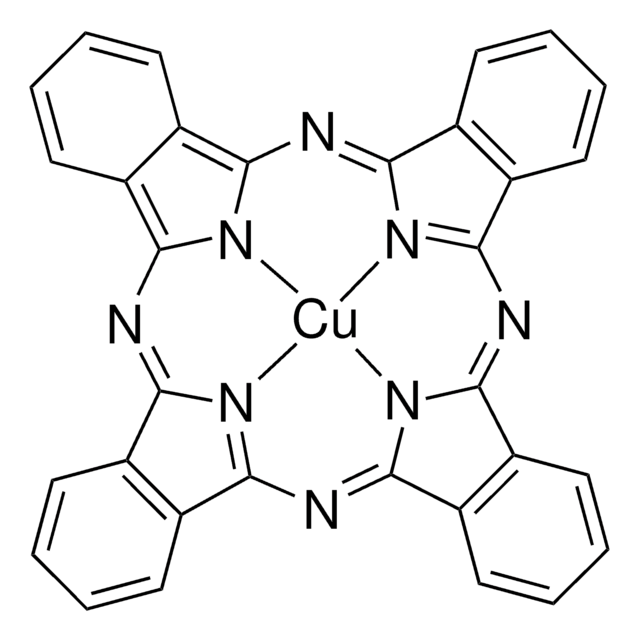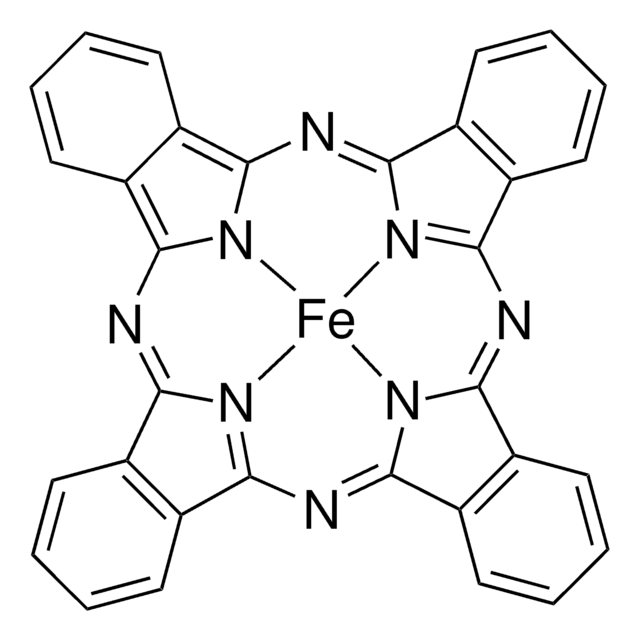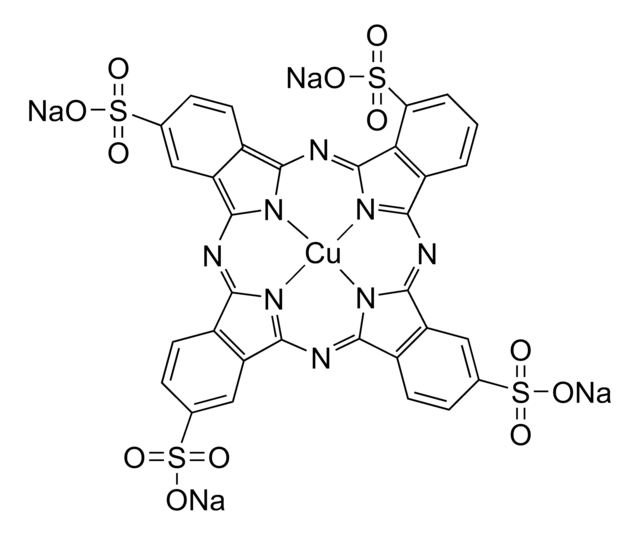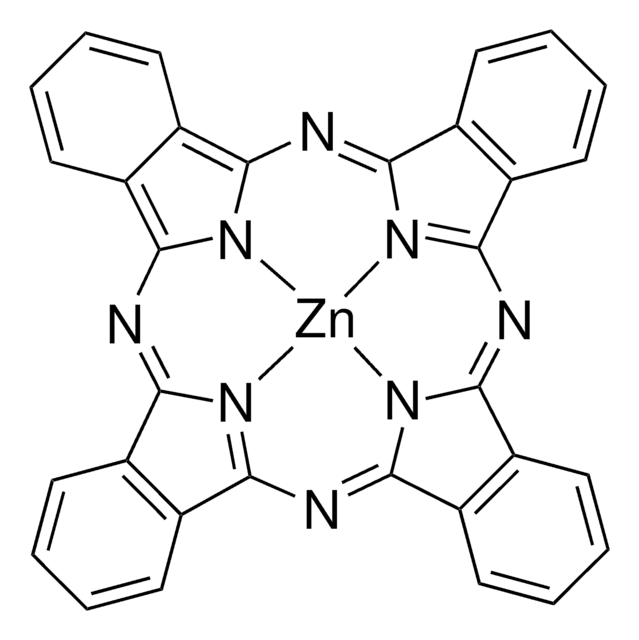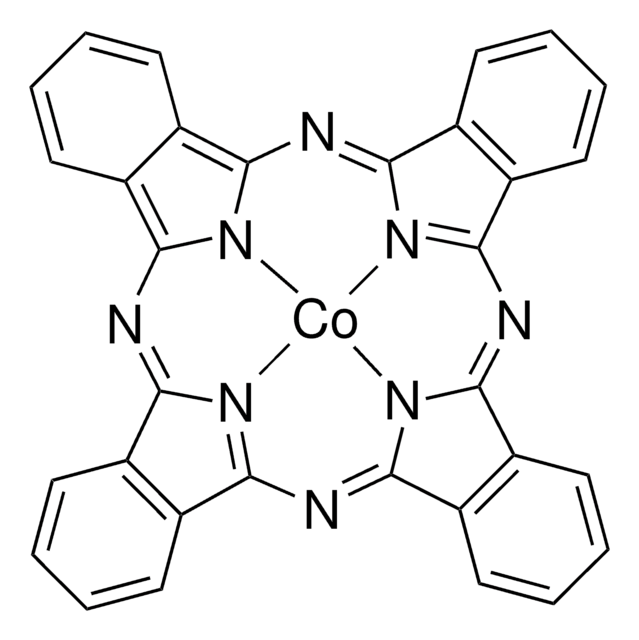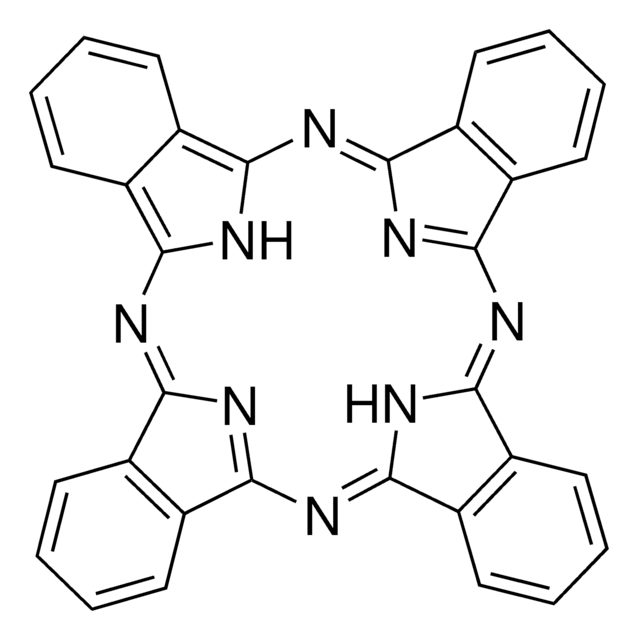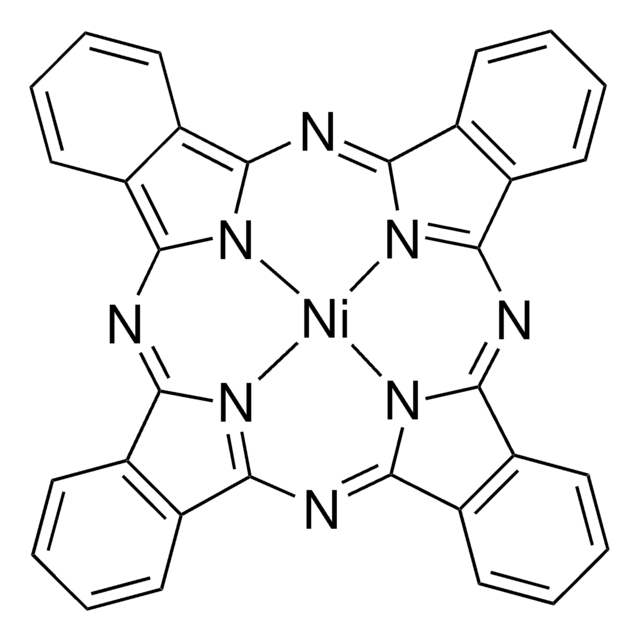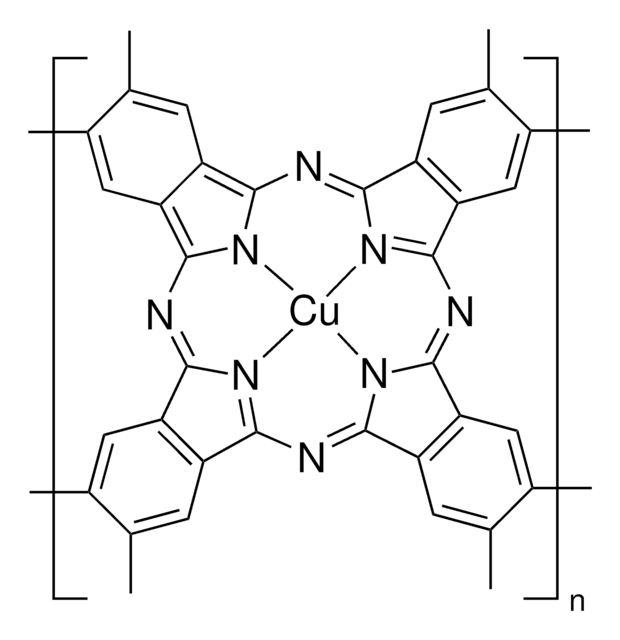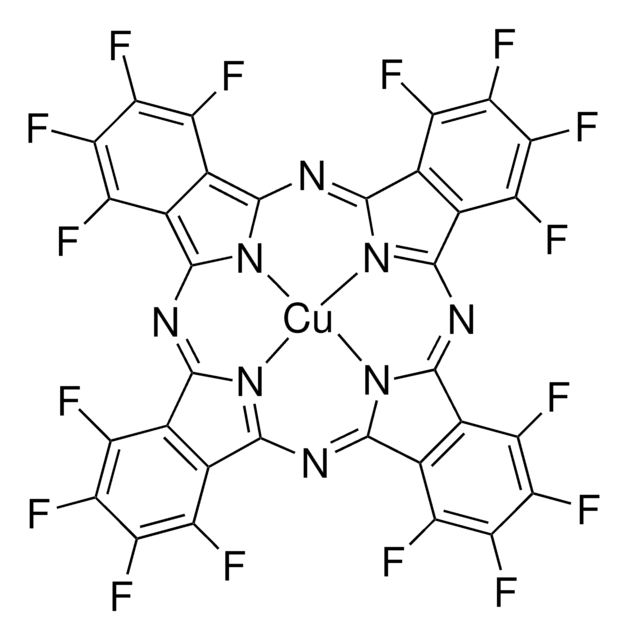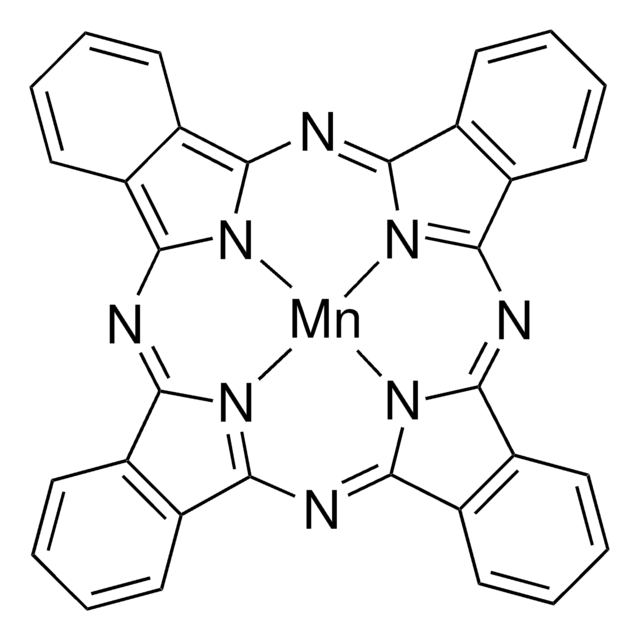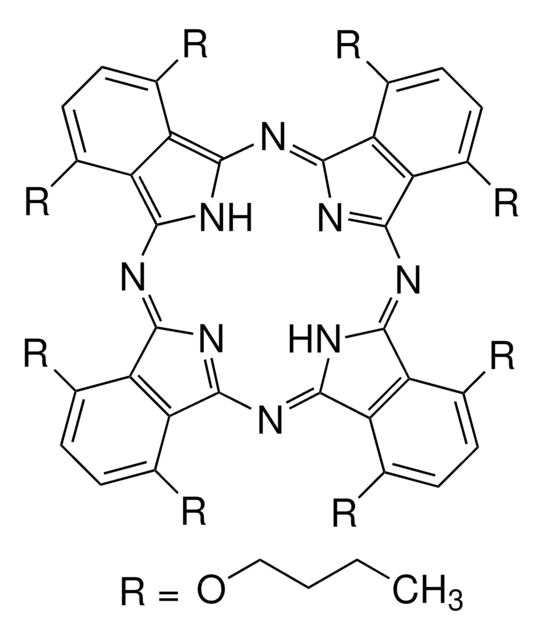Wichtige Dokumente
546682
Kupfer(II)-phthalocyanin
Dye content >99 %
Synonym(e):
CuPc, Phthalocyaninblau, Pigment Blue 15
About This Item
Empfohlene Produkte
Zusammensetzung
Dye content, >99%
λmax
678 nm
Leistung von OLED-Bauelementen
ITO/CuPc/NPD/Alq3/C60/Mg:Ag
ITO/CuPc/NPD/Alq3/LiF/Al
ITO/CuPc/NPD/CBP:FIrpic (6%)/BAlq3/LiF/Al
Leistung von OPV-Bauelementen
ITO/CuPc/PTCDA/In
ITO/PEDOT:PSS/CuPc/C60/BCP/Al
SMILES String
c1ccc2c(c1)C3=NC4=[N@@H]5C(=Nc6n7c(N=C8c9ccccc9C%10=[N@@H]8[Cu]57N3C2=N%10)c%11ccccc6%11)c%12ccccc4%12
InChI
1S/C32H16N8.Cu/c1-2-10-18-17(9-1)25-33-26(18)38-28-21-13-5-6-14-22(21)30(35-28)40-32-24-16-8-7-15-23(24)31(36-32)39-29-20-12-4-3-11-19(20)27(34-29)37-25;/h1-16H;/q-2;+2
InChIKey
XCJYREBRNVKWGJ-UHFFFAOYSA-N
Suchen Sie nach ähnlichen Produkten? Aufrufen Leitfaden zum Produktvergleich
Verwandte Kategorien
Anwendung
- A facile molecularly engineered copper (II) phthalocyanine as hole transport material for planar perovskite solar cells with enhanced performance and stability: This study introduces a modified copper(II) phthalocyanine that enhances the performance and stability of perovskite solar cells (Yang et al., 2017).
- Dopant-free methoxy substituted copper (II) phthalocyanine for highly efficient and stable perovskite solar cells: Discusses the synthesis and application of a methoxy-substituted copper(II) phthalocyanine, improving the efficiency and stability of perovskite solar cells (Ding et al., 2020).
- Highly efficient dye-sensitized solar cells based on metal-free and copper (II) phthalocyanine bearing 2-phenylphenoxy moiety: Examines novel phthalocyanines for use in dye-sensitized solar cells, focusing on their synthesis and photophysical properties (Ali et al., 2016).
- Operando HERFD-XANES and surface sensitive Delta mu analyses identify the structural evolution of copper (II) phthalocyanine for electroreduction of CO2: This research uses advanced spectroscopic techniques to explore the structural changes in copper(II) phthalocyanine during CO2 electroreduction (Mei et al., 2022).
- New dye sensitized photocatalysts: Copper (II)-phthalocyanine/TiO2 nanocomposite for water remediation: Studies a copper(II) phthalocyanine-TiO2 composite as a photocatalyst for water remediation, showing its effectiveness in degrading pollutants under light irradiation (Albay et al., 2016).
Lagerklassenschlüssel
11 - Combustible Solids
WGK
nwg
Flammpunkt (°F)
Not applicable
Flammpunkt (°C)
Not applicable
Persönliche Schutzausrüstung
Eyeshields, Gloves, type N95 (US)
Hier finden Sie alle aktuellen Versionen:
Besitzen Sie dieses Produkt bereits?
In der Dokumentenbibliothek finden Sie die Dokumentation zu den Produkten, die Sie kürzlich erworben haben.
Kunden haben sich ebenfalls angesehen
Artikel
The conductivity of organic semiconductors can be increased, and the barriers to charge-carrier injection from other materials can be reduced, by the use of highly reducing or oxidizing species to n- or p-dope, respectively, the semiconductor.
Professor Shinar (Iowa State University, USA) summarizes the developments of a variety of sensor configurations based on organic and hybrid electronics, as low-cost, disposable, non-invasive, wearable bioelectronics for healthcare.
While dye sensitization as the basis for color photography has been accepted for a very long time,1 attempts to use this principle for the conversion of solar light to electricity generally had resulted only in very low photocurrents, below 100 nA/cm2.2
Unser Team von Wissenschaftlern verfügt über Erfahrung in allen Forschungsbereichen einschließlich Life Science, Materialwissenschaften, chemischer Synthese, Chromatographie, Analytik und vielen mehr..
Setzen Sie sich mit dem technischen Dienst in Verbindung.